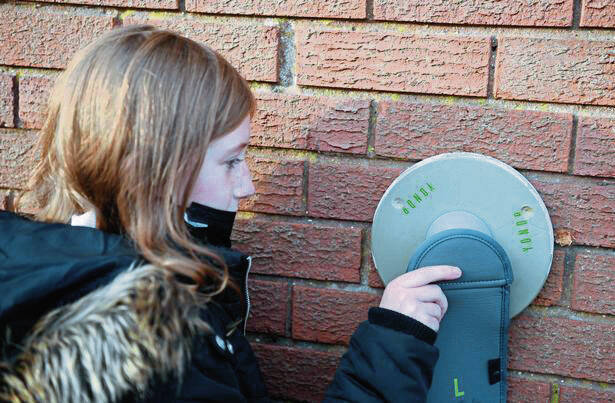Cellphones in schools: Some districts take steps to eliminate devices from class while others balance benefits
Wake up. Check your phone. Go to class. Check your phone. Start homework. Check your phone. Go to bed. Check your phone.
For some high schoolers, cellphone use is almost on par with blinking, with the average teenager raking in up to nine hours of screen time each day, according to the American Academy of Child & Adolescent Psychology.
In the classroom, phones can serve as an educational tool or a pesky distraction. The latter rang true for six Western Pennsylvania schools — so much so that these schools will take steps to eliminate cellphone use from the classroom during the 2022-23 academic year.
As some students prepare to go phoneless, other Western Pennsylvania districts aim to find balance and urge responsibility among their students.
A problem with classroom engagement
Students at Penn Hills High School, Pittsburgh Milliones, Provident Charter School, Obama Academy, City Charter High School and Washington High School and Junior High School will be required to store their smart devices in Yondr pouches — small bags with magnetic locks that work similarly to clothing security tags.
Since 2014, these pouches have been used by schools, courts, concerts and comedy shows looking to eliminate screen use.
In a school setting, students can carry their phones in the locked pouch from class to class and unlock the pouch at the end of the day.
“We felt like (Yondr pouches) would be a way to balance the increasing needs that we were having and providing a solution that still had a bit of student autonomy,” said City Charter High School CEO and Principal Dara Ware Allen. “Phones aren’t really needed, and what we’ve found is that they have been creating more problems than being used as a positive tool.”
City High has seen cellphone use skyrocket since the onset of the pandemic, Allen said. With increased phone use came increased distractions.
At many schools, phone-related distractions now are persistent, regardless of whether the school has strict or lenient cellphone policies. Chet Henderson, principal of Washington High School, said phones can take away high schoolers’ ability to be “physically and mentally present.”
As school-provided laptops and tablets become the norm, some administrators are questioning whether cellphones are ever needed as an educational tool in the classroom.
Penn Hills High School began asking that question four to five years ago, high school Principal Eric Kostic said.
At the time, administrators decided to work with teachers and students to encourage “disengagement” from phones during class, Kostic said.
However, after a “really hard” year of phone-related distractions in 2021-22, the school decided to give Yondr a try.
Related:
• Penn Hills lawmaker seeking to ban cellphone use in schools statewide
• Boost in K-12 state funding to impact Allegheny, Westmoreland districts
• As Pa. teacher shortage looms, legislators consider bill to smooth out-of-state certification
“My hope is that students can interact with one another socially and academically and learn again how to communicate well face to face rather than using their phones,” Kostic said. “I guess, in summary, I hope their screen time goes down.”
Allen and Kostic said phone access can lead to nefarious interactions during the school day. City High has experienced students sending “unwanted messages” on social media during school hours, Allen said.
By using Yondr, Penn Hills hopes to see a decline in high school disciplinary issues like it did at Linton Middle School. During the 2021-22 academic year, the middle school piloted a program that required students to turn in their phones to their homeroom teacher at the beginning of the day and retrieve them at the end of the day.
Compared to the 2019-20 school year, Linton saw a 74% decline in fights, 89% decline in bus referrals and 57% decline in bus suspensions, Penn Hills Superintendent Nancy Hines said. Additionally, there were 13 police citations issued in 2019-20 and zero issued in 2021-22.
Kostic said the district considers the removal of cellphones from the classroom as a “contributing factor” in the change.
Problems with cellphone use
Kostic said he believes some high schoolers are “almost addicted” to their notifications, and Henderson described cellphones as students’ “lifeline to things going on.”
Gary Swanson, a child and adolescent psychiatrist at Allegheny Health Network, said phones — specifically social media apps — are “behaviorally reinforcing,” meaning they are designed to keep users engaged.
Thirty years ago, high schoolers would call each other on their home landlines, but eventually the conversation would end or their parents would kick them off the phone.
Now, the information stream from social media platforms, communication apps and websites can keep people staring at a screen for hours on end.
“It’s hard to set limits with cellphones,” Swanson said. “The more time you spend on (your phone), the more time you’re not exercising, doing homework, sleeping or participating in family activities.”
On average, Americans check their phones 344 times per day — once every four minutes — and 47% of Americans consider themselves “addicted” to their phones, according to a 2022 study by Reviews.org, a nonprofit home services company.
Cellphones can be associated with anxiety, sleep deprivation, low self-esteem, cyberbullying and increased access to sexual content, violence and drugs, Swanson said.
On top of that, it’s difficult for parents to monitor their kids’ online activities, Swanson added.
Other districts see silver lining
Swanson acknowledged there are benefits to cellphones, such as increased communication and creativity. He said he believes Yondr pouches “might be useful for some kids and more problematic for others.”
State Rep. Anthony DeLuca, D-Penn Hills, introduced a bill in May seeking to prohibit cellphone use in all Pennsylvania schools, but not all Western Pennsylvania districts are itching to change their policies.
At Highlands High School, the district doesn’t recommend cellphones on campus, but it doesn’t prohibit them either. Students are allowed to have cellphones and other electronic devices, but they are expected to put them away during class.
According to the student handbook, kids can use their phones with a teacher’s approval but only for quiet activities. No phone calls are allowed. Neither is making videos of the school or other students. Earbuds and headphones also are prohibited.
Violators can have their phones taken away. Students who refuse to turn them over are reported to the administration for disciplinary action.
Hempfield Area’s policy allows students to use cellphones only in approved classrooms for educational purposes. Otherwise, phones must remain off and out of sight.
Superintendent Tammy Wolicki said most parents want their child to have access to their phone in case of a personal or school emergency.
When Penn Hills introduced its no-phone policy, Kostic said he heard that same argument from several parents and described it as a “valid feeling.” But he pointed out that the district has nurses and school phones readily available.
Other districts hope to instill life lessons by allowing phones to varying extents.
Upper St. Clair Assistant Superintendent Amy Pfender said the district’s policy emphasizes “responsible use” and classroom management. Some classrooms utilize cellphone caddies that give teachers the option of requiring phone storage or students the option of voluntarily storing their phones.
Through its curriculum and presentations, the district also works with students and parents to foster cellphone and internet safety.
“It’s all about balance and choice,” Pfender said. “(Cellphones) are here, so we need to make good decisions as adults for kids so they know the best way to utilize the device.”
Robert Gumbita, principal at Mt. Pleasant Area Senior High School, called the possibility of cellphone distractions “learning opportunities.”
“We live in a hyper-connected world,” Gumbita said via email. “Disconnecting students does not prepare them for the world we live in today. What better place to teach students how to be responsible with that usage than at the schoolhouse gate?”
Addressing problems at home
Swanson stressed the importance of teenagers using cellphones in moderation. Spending one to two hours on a phone per day “seems to be OK” for teens, he said.
Meanwhile, teens who spend no time on their phone can report worse mental health because they feel lonely or isolated, and those who spend more than two hours have “increasing mental health problems.”
Swanson described many hours of screen time as toxic.
The psychiatrist encouraged parents to establish boundaries for their children. For example, parents could prohibit screens at the dinner table, keep screens out of the bedroom or prohibit social media until homework is finished. He also encouraged parents to keep tabs on their children’s social media profiles.
“Teenagers don’t think the same way adults do,” Swanson said. “Adults think about danger first and the good things second. Teenagers think about the good things first. They don’t assess the risk and positives in the same way adults do.”
Swanson said parents have more control of their children’s phone use than they might realize. Parents likely pay for the phone and its access, he said.
“It’s not like one rule fits all,” Swanson said. “Parents do have to adjust with their kids’ maturity.”
Remove the ads from your TribLIVE reading experience but still support the journalists who create the content with TribLIVE Ad-Free.



